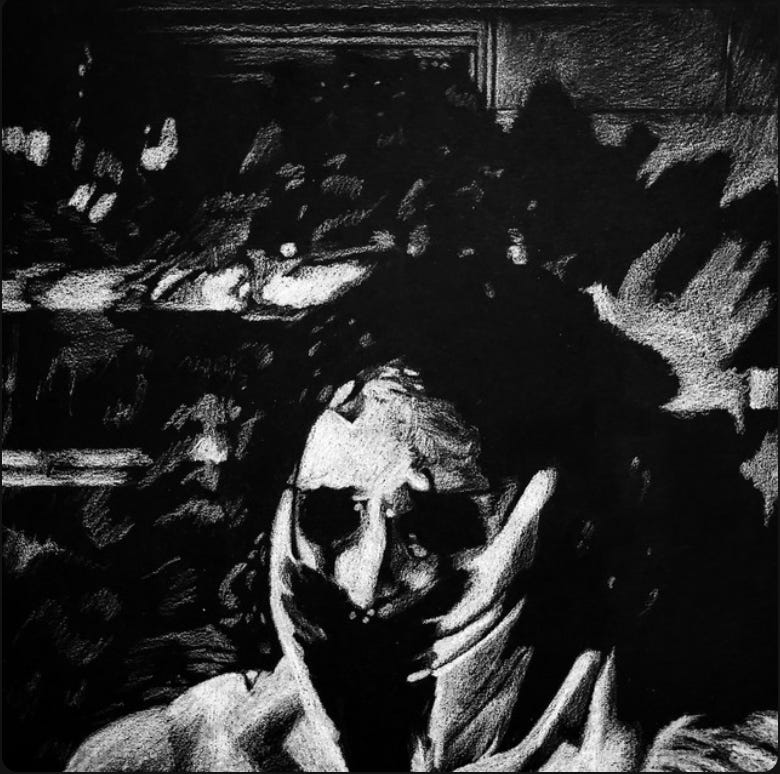The Screamo genre is beautiful and complex. Perhaps it has been for some time, hidden in the shadows or places deeper, devoid of shadows.
I don’t know where its listeners hide. I imagine some pubs play this music in unheard-of suburbs across the US, or maybe in larger midwest or northeast metropolitan areas like Chicago or Philadelphia. Wherever such scenes might exist, they are far away from me. I live in Tel Aviv. Screamo doesn’t make it out here.
Thanks to Spotify and a friend with similar interests, I get the pleasure of fortuitously discovering underground Screamo bands one after the other. It’s like potato chips or popcorn. The number of amazing bands with less than 4K Spotify monthly listeners is mindblowing. It’s hard for me to digest this egregious injustice.
I found Eyelet’s “The Devil Shining out Your Eyes” a few weeks ago. It challenged my thoughts and emotions. The raw emotion made me more comfortable with my own emotional vulnerabilities, and my joy at first was in that temporary space created by my experience through exposure to this beautiful album.
No piece of music, or art, can make one feel deeply were it not masterfully created. The musicianship and talent of Eyelet are spectacular. I think they have some ways to go and improve, so I was stoked to learn through their social media that they are creating more music (yay!).
Not only is the music precise, but it also has that priceless quality of transcending the listener beyond that which is picked up by the ears, even if that listener is well attuned to such dense music.
And I love the artwork.
I feel better than that guy in the picture when listening. The artwork is beautiful, but off-putting. There is deep despair in it, contrary to the music which in my opinion does have hope leaking through its cosmic apertures.
The melodies are gentle and subtle. They remind me of short and beautiful sonatas. This is a nuance hidden from unwilling listeners of extreme music, but it is the beauty that hides away at the core of the onion. It is a blend of violent and omnipresent noise, dancing around colorfully, like a lost ballerina deep below in the spiritual underworlds, in the quiet, peaceful caves of darkness. Clean from spite, clean from conflict. Only the maddened artist in perennial pursuit and inner manifest of beauty, alone in a terrifying, yet physically harmless world, can survive and, moreover, be emboldened by such a state.
This omnipresence is used in extreme music to delude the listener, hiding the fragile gems of melody behind multiple layers of noise. In nature, the most precious things are hidden behind layers of protective shells. We as humans protect our most precious truths and feelings behind lies and prevarications. And it is in those precious insides that Eyelet’s music tickles you.
There is not a dull moment in this album. The songs flow beautifully from one to the other. Omit needless words, Hemingway said (I think it was Hemingway), Checkohv’s gun -these two principles are omnipresent in an album so focused, interesting, and unrelenting. Every segment of the music turns into an unpredictable other, keeping the listener at the edge of their seat, thrown between different atmospheres and emotions. Dark, but hopeful.
A Network of Influences in the Evolution of Music
One of my utmost joys in music is deciphering its influences. Eyelet is interesting in this way. I’ll listen to Neurosis here and there, sludge metal, melodic post-hardcore, midwest-emo, screamo, black metal, and any other whatever sub-genre we’ve had enough of and / or can’t get enough of. Black metal has seethed into many sub-genres in the past couple of decades, which is astonishing given that the genre has barely evolved since 1995. It was surprising to hear Neurosis influences in the album (check out the song “Unborn”), albeit not pervasively. It is an example of a non-trivial influence in a Screamo album. I loved Neurosis for a while when I was a student in Jerusalem. It was a phase. Today I can barely listen to them, but those few Neurosis-inspired bridges in the album feel nostalgic and pleasantly familiar, a feeling heightened by its unpredictability.
Is every band influenced by a multitude of others? Is every artist? Is every piece of art? The influence one artist has on another is infinitely fascinating to me. Say, for example, that Radiohead was the first band I listened to in, let’s call it, the “influence chain”. Then I will believe that Radiohead invented their entire sound. This is because I am not familiar with their influences. Had I been familiar, I would have spotted them right away.
As to the multitude, one band is influenced by many others and outputs one type of sound, their sound. They then influence another multitude of bands. In this way, if we were to chart the influences across time of all bands to all others, we would get a complicated one-directional network in which every band is a single node in the network. The beauty of music, when done well, is that it fits into this giant network that is, in its entirety, a human creation.
The resemblance of the evolution of music over time to a neural network is intriguing. In its essence it is the sharing of information, having music as the information, and its studied evolution as a structure of growth for the sharing, or rather expansion, of knowledge and information. Sharing information is the essence of human life. A piece of music, such as “The Devil Shining Out Your Eyes”, that builds more bricks on this pyramid of hope and knowledge is one to be cherished.




